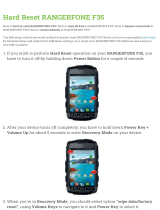
GB 3
DEFINITION OF USE
This washing machine is exclusively destined to
wash and spin machine washable laundry in
quantities which are usual for private households.
• Observe the instructions given in these
Instructions for Use, the Installation Guide and
the Programme Chart when using the washing
machine.
• Keep these Instructions for Use, the Programme
Chart and the Installation Guide; if you pass on
the washing machine to another person, also give
him/her Instructions for Use, Programme Chart
and Installation Guide.
SAFETY AND GENERAL RECOMMENDATIONS
1.Packaging
• The packaging material is entirely recyclable, and
marked with the recycling symbol . Adhere
to current local regulations when disposing of
packaging material.
2.Disposing of packaging and scrapping
old washing machines
• The washing machine is built from reusable
materials. It must be disposed of in compliance
with current local waste disposal regulations.
• Before scrapping, remove all detergent residues,
break the door hook, and cut off the power cable
so that the washing machine is made unusable.
• This appliance is marked according to the
European directive 2002/96/EC on Waste
Electrical and Electronic Equipment (WEEE).
By ensuring this product is disposed of correctly,
• you will help prevent potential negative
consequences for the environment and human
health, which could otherwise be caused by
inappropriate waste handling of this product.
The symbol on the product, or on the
documents accompanying the product, indicates
that this appliance may not be treated as
household waste. Instead it shall be handed over
to the applicable collection point for the recycling
of electrical and electronic equipment.
Disposal must be carried out in accordance with
local environmental regulations for waste
disposal.
For more detailed information about treatment,
recovery and recycling of this product, please
contact your local city office, your household
waste disposal service or the shop where you
purchased the product.
3.Location and surroundings
• The washing machine is appropriate for indoor
use only. Installation in bathroom or other places
where air is humid is not recommended.
4.Safety
• Do not store flammable fluids near the appliance.
• Do not leave the appliance plugged in when not
in use. Never plug or unplug the power if your
hands are wet.
• Turn off the tap when not in use.
• Before any cleaning and maintenance switch off
the machine or disconnect it from the mains.
• Clean the outside of the machine with a damp
cloth. Do not use abrasive detergents or general
purpose/window cleaners etc.
• Never open the door forcibly or use it as step.
• Children must not be allowed to play with the
washing machine or to climb into the drum (see
also the following page chapter “Child Safety”).
• If necessary, the power cable may be replaced
with an identical one obtained from our After-
Sales Service. The power cable must only be
replaced by a qualified technician.
• Do not operate the washing machine at
temperatures below 5°C.
• Do not place a dryer on the worktop of your
washing machine.
5.Frost
Do not place the washing machine in a room prone
to frost. If you must, make sure that the washing
machine is completely drained after each wash:
• Remove inlet hose(s) from water tap and let the
water flow out completely.
• Remove drain hose from siphon or handwash
basin and let the water flow out completely.
• Empty residual water inside the machine by
following the instructions in the chapter
“CLEANING THE FILTER/DRAINING
RESIDUAL WATER”; tilt the appliance forward
with two persons to let the rest water flow out
completely.
6.EC Declaration of Conformity
• The appliance conforms to the following
European Standards:
2006/95/EC Low Voltage Directive
2004/108/EC Electromagnetic Compatibility
Directive
The Manufacturer is not liable for any damage to
laundry resulting from inadequate of incorrect
fabric care instructions which have been provided
with the garment or article.
IFU Ares W10426884A GB.fm Page 3 Wednesday, August 10, 2011 11:09 AM
Black process 45,0° 130,0 LPI
16-Sep-2011 03:29:02 EDT | RELEASED
In some European factories the letter "W" of the part code mentioned herein will be automatically
replaced by the number "4000" (e.g. "W12345678" becomes "400012345678")
















